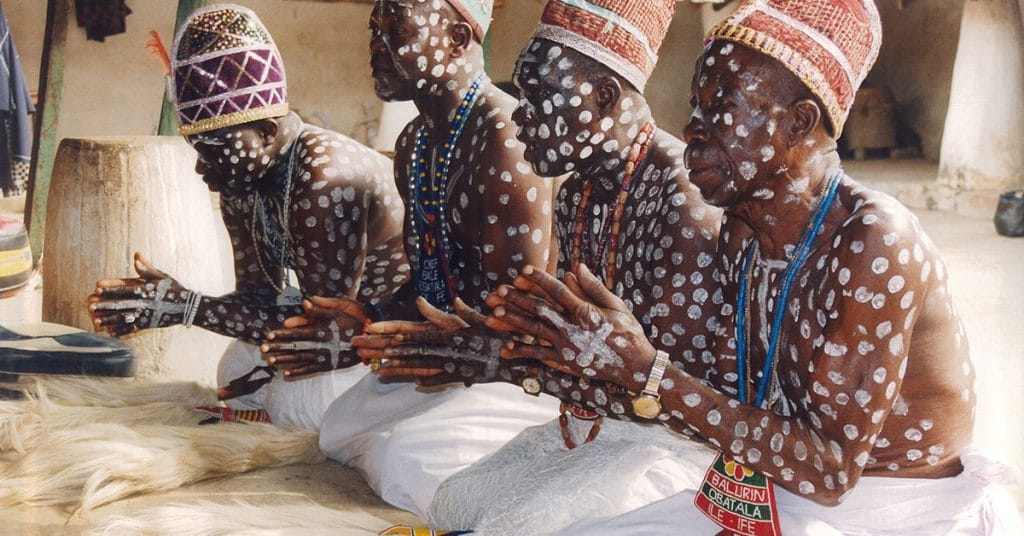In the Orisha faiths, Obatalá is the sky father, son/daughter of the one God (Olodumare), and creator of Earth and humans.
Yoruba culture of modern Nigeria, Benin and Togo is considered the mother culture of the Orisha faiths, but there are related traditions up and down the West Coast of Africa.
If you strip away the religious concepts, the Orishas are forces of nature which are universal and exist everywhere. The old Greek traditions were similar in venerating forces of nature and giving them human characteristics. The similarity is really striking.
In the Americas, Orisha veneration is syncretized (blended) with Catholic saints. Some of the Orishas are people from history who are deified for their good deeds, just like saints are in Catholicism. But Orishas are not saints. The ideas are similar, but unique.
We often say these are African religions. The Orisha faiths originate in Africa, but we know them through the traditions of Cuba, Haiti, Brazil and others. The traditions we celebrate are traditions of the Americas.
Forces of nature are also sacred in many Indigenous American traditions. The traditions are completely independent, but the similarities are striking. There is something essentially human in all of this.
The Creation Myths
Orisha faiths of West Africa, Central Africa and the African Diaspora are verbal traditions that vary by region, community and even by family.
In the beginning the Earth was all water. Oludumare (God) gave Obatalá some dirt and a chicken with instructions to create the Earth. Obatalá piled the dirt in the center of the oceans and put the chicken on top of it. The chicken scratched the dirt and thereby created the land.
Then God told Obatalá to create humans. She/He created many healthy bodies, but after drinking some palm wine , made some that were not perfect. Knowing the pain caused by her/his mistakes, Obatalá cares deeply for the disabled.
Characteristics of Obatalá
Obatalá has a wife, but is gender-fluid with both female and male aspects. This is true of all of us, if you think about it. The creative part of a woman is her Animus or male aspect. The creative part of a man is his Anima or female aspect.
The spark of consciousness in us is Obatalá. She/He looks after everyone, unless another Orisha takes your head.
Obatalá wears white because it has all the colors in it and she/he takes care of all of us. She/He accepts offerings of white foods without spices. White clothes, coconut milk, white pumpkin, silver and ivory are associated with Obatalá.
Obatalá is the godmother/father of the Orishas so she/he looks after them and settles their arguments.

The white dove is Obatalá. What other associations do humans make with white doves? Isn’t that wonderful how similar we are?
Obatalá in Mother Africa

She/He is the founder and former king of Ile-Ife, Nigeria, the Yoruba holy city where Obatalá came from heaven.
Obatalá in the Americas
Africans brought Obatalá to Cuba, Haiti and Brazil. From there his devotion spread through Santería, Vodou, and Candomblé, the beautiful American religions related to the Yoruba cosmology that dominates African Diaspora culture in the Caribbean and South America.
To avoid persecution, the faithful syncretized Obatalá with both the Virgin of Mercy and Jesus, while Candomblé faithful syncretized her/him with Our Lord of Bonfim, the patron saint of Bahia, Brazil, the Brazilian cultural heartland.
¡Ashé!
